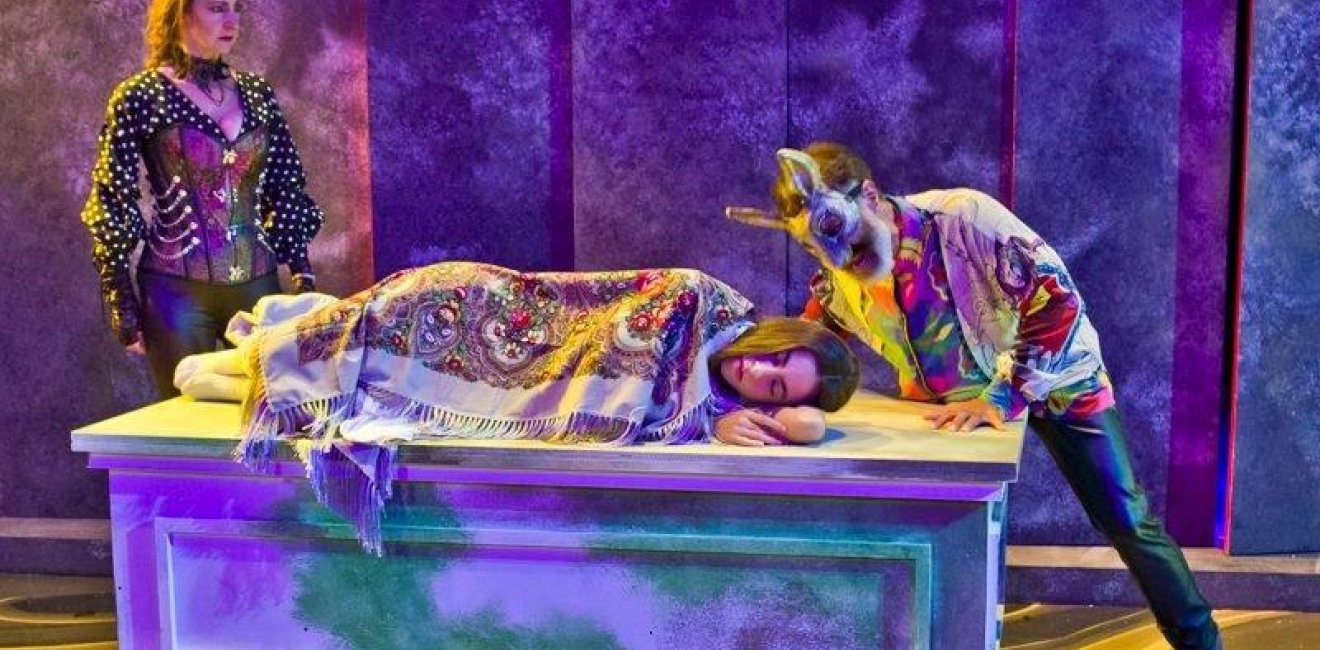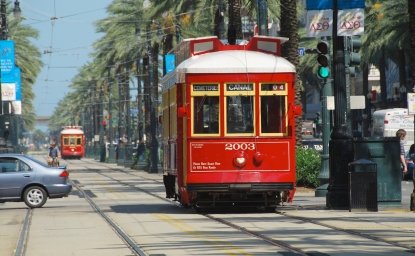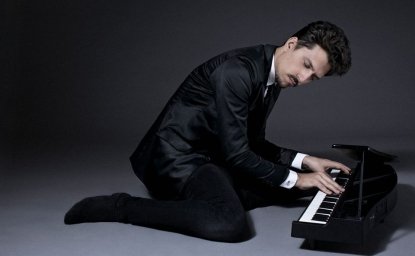
In some ways Argentine actor and director Hugo Medrano began a career in theater at a most unpropitious time. He graduated from university with a degree in theater studies just as his homeland was about to descend into a dark political era now known as the “Dirty War.” He set off for Spain to hone his craft, spending five years working in theater there at the end of the Franco dictatorship. As with many South American intellectuals of the period, he found refuge in the United States, settling into Washington, D.C. He initially worked in the city’s only Spanish-language theater at the time, a bilingual children’s theater company Teatro Doble.
Washington has rarely been considered a major outpost of Spanish-language culture; though perhaps it should be. The city’s long-established Latin diplomatic community draw heavily on well-educated intellectuals steeped in traditional Spanish language letters. As the political, ideological and philosophical conflicts unleashed by the geopolitics of the Cold War ebbed and flowed, cultural creators--including several future giants from across South America--came and left Washington, depending on the ascendency of left or right political regimes back home.
Less visible, though no less significant for the development of Spanish-language culture in the city, the Washington metropolitan region was about to become an immigrant gateway. At first, large-scale immigration came from countries torn by civil strife, followed soon thereafter by economic migration. If less than five percent of Washington’s population was foreign born when Medrano arrived in the city in the early 1970s, almost fifteen percent would be in the early years of the twenty-first century.
Large immigrant communities spread across the Washington metropolitan region. During the 1990s alone, a quarter-million immigrants from 193 countries and territories settled in the Washington metropolitan area as the region became the fifth most common destination for legal immigrants in the country, behind New York, Los Angeles, Chicago and Miami. Unlike the patterns in more customary receiving cities, no single immigrant group dominated; though a third travelled from Latin America and the Caribbean, and Salvadorans constituted the region’s largest single immigrant group.
This was a moment when English translations of Latin American literature were moving to the top of best sellers lists. Growing interest in Latin American magical realism lured more than a few non-Spanish-reading intellectuals further and further into Spanish literary traditions. This was especially true in Washington, a city that was home to a well-educated and worldly professional middle class.
By the 1970s, demand in Washington was exploding for both high and low brow Spanish language based culture. Medrano arrived just at this seminal moment. Making his way around the city’s Spanish-speaking communities Medrano encountered Rebecca Read, a former dancer who was working at the Organization of American States. Medrano and Read settled into the as-yet-ungentrified multicultural bohemian Adams Morgan neighborhood.
In 1976, operating out of a typical Victorian-era brick D.C. townhouse, Medrano and Read--who married one another--joined with their friends to establish the Grupo de Artistas LatinoAmericanos (GALA). The consortium embraced visual artists, writers, dancers, singers, musicians and actors who wanted to nurture Latino culture in Washington. GALA’s productions presented Latin American works performed in Spanish as well as in English. From the very beginning, the Medranos and their colleagues sought to integrate their Latin American artistic traditions and sensibilities into the larger Washington cultural community.
Early GALA productions often showcased the political themes of the era. Many immigrants in Washington at the time had fled their homelands for political reasons, including intellectuals who were escaping dictatorships. Joined by large numbers of Central American migrants escaping civil war, politics naturally were at the top of everyone’s mind. GALA quickly developed an additional educational mission, presenting children’s plays and working with community leaders to transfer Latino cultures to the next generation. Such outreach and children’s theater efforts have remained central to GALA’s operations ever since.
By the turn of the twenty-first century GALA had become a widely-respected and much-praised presence on the D.C. cultural scene. During its first three decades, the company produced nearly 150 plays in Spanish and English while supporting poetry, music and dance programming. The company established a network of actors who came from across the Americas to perform in Washington, and became a leading institutional touchstone for the city’s growing Hispanic community. Nonetheless, they still did not have a permanent home.
As the century came to an end, the D.C. government requested proposals for redevelopment of the historic Tivoli Theater in the increasingly multicultural Columbia Heights community to support the area’s revitalization. Designed by noteworthy theater architect Thomas W. Lamb, the Tivoli was a city landmark when it opened in 1924. A few years later ownership passed to Warner as part of a consolidation of the company’s Washington operations.
The Tivoli survived as a cinema until the April 1968 civil disturbances following the assassination of Dr. Martin Luther King, Jr. when the neighborhood suffered severe damage and was slow to recover. The building was boarded up in 1976 and sat vacant for the next quarter century.
The Medranos had long been interested in the building and joined in a proposal submitted by the Horning Brothers developers to convert the building into a mix of offices and retail with a theater. City officials were taken with the idea of returning the Tivoli to its original theatrical purpose as well as recognizing GALA’s contributions to the neighborhood over the previous decades. In 2005 the Medranos moved their company into its now permanent home.
Over the course of the two decades of the company’s residence at the Tivoli, GALA has consolidated its presence in an ever-growing Washington theater scene. Recognition has followed with the company winning several Helen Hayes awards and the Medranos being named 2010 Washingtonians of the Year by Washingtonian Magazine. The company’s outreach programs have become a mainstay of child-oriented cultural programming in the city; its highly professional and innovative productions regularly attract wide and diverse audiences, all just two miles uphill from the White House.
In 2017, the GALA premiered the first Spanish-language production of Lin-Manuel Miranda’s “In the Heights” to rave reviews. The show was a triumph for the values expressed by the founders of the Grupo de Artistas LatinoAmericanos four decades previously; all the more so as it appeared in one of the nation’s most vibrant multicultural urban neighborhoods, Columbia Heights, in a treasure of a theater originally designed by one of this country’s most distinguished theater architects.
The at times difficult-to-please Washington Post critic Peter Marks could hardly contain his enthusiasm. “So there is a sense of linguistic homecoming for this kaleidoscopic story of contemporary life among the Americans of Puerto Rican, Dominican, Cuban, and Mexican descent in Manhattan’s Washington Heights to be sung,” he wrote in April 2017, “in the language of its rollicking, struggling characters. And how grand for GALA Hispanic Theatre, the tenacious company tacking Spanish and Latin American plays in Columbia Heights, to be the one to produce it.”
Hugo and Rebecca Medrano are leaving an indelible mark on Washington, D.C. and on American theater by embedding Latin American drama in the heart of the Washington theater community. GALA Theater demonstrates the power of multiculturalism with each new performance.
Artistic Visionaries and Community Creators
The power of the performing arts to nurture inclusive communities has been praised widely in recent years; so much so that “creative placemaking” is now seen as a powerful tool in community development. The supportive role of community in fostering artistic innovation is less acknowledged. This series highlights the work of visionaries for whom creating communities of students, protégés, audiences, and donors has become a strategic element in transforming their arts.
Author

Former Wilson Center Vice President for Programs (2014-2017); Director of the Comparative Urban Studies Program/Urban Sustainability Laboratory (1992-2017); Director of the Kennan Institute for Advanced Russian Studies (1989-2012) and Director of the Program on Global Sustainability and Resilience (2012-2014)
Explore More in Artistic Visionaries and Community Creators
Browse Artistic Visionaries and Community Creators
Mark and Susan Marie Rhea and Irish Theater

Andrew Kingsley, Andrew Vaught and Social Impact Theater

Hernán Jacinto

